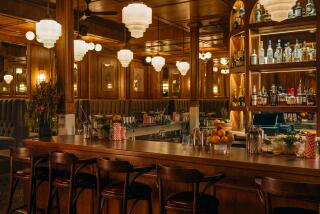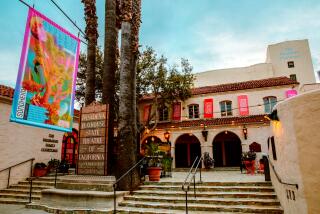The rise and fall of dinner theater
To some, “dinner theater” conjures up fond recollections of pleasant nights out, an evening starting with a seared piece of meat for the entrée and Lerner and Loewe or Rodgers and Hammerstein for dessert. All for, as they say, an affordable price. What could be better?
But ask a hard-core Broadway purist or most theater critics and you’ll get a very different assessment. Theater historian Ken Bloom has a scathing view: “Most dinner theater has been theater at its lowest-common denominator. At the small places, it could be bad ham on stage meets bad ham at the buffet table.”
But Bloom, who has written extensively about American theater, grudgingly leavens his distaste to acknowledge a few positive qualities.
“Young actors could get a chance to be in front of an audience, though sometimes they had to be waiters before the show,” he says.
These days, for good or ill, this form of dinner theater has receded, replaced by spinoff genres that dot the landscape — audience-participation murder mysteries; plot-less cabarets coexisting with cold-cut buffets; medieval knights on horseback jousting in an arena setting. Near Disneyland, a 950-seat venue parlaying a dance competition theme with dining called “Battle of the Dance” is scheduled to open in February.
Whatever the activity, the concept of paying one price for a full sit-down meal and fully staged entertainment began in Virginia in 1953. By the mid ‘60s, the name “dinner theater” was affixed, and a chain of 27 Barn Dinner theaters stretched from New York through six Southern states — productions were developed in New York and then sent out on the road to tour the franchised houses ( Robert De Niro reportedly was canned midshow during a production at the Barn in Greensboro, N.C., a still-open venue that is the longest continuous dinner theater in America).
The late 1970s into the early 1980s saw the form’s high-water mark, with almost 150 professional dinner theaters operating nationally. A big lure: celebrities on stage, with the likes of Joey Bishop, Mickey Rooney and Esther Rolle among the dozens of familiar faces starring in retread comedies and musicals. Burt Reynolds came off “The Tonight Show” couch to take the ultimate step; he owned a dinner theater in Jupiter, Fla., for almost 20 years.
Locally, the epicenter of dinner theater was in Orange County during the 1980s. Houses with fulsome names flourished: The Grand Dinner Theatre in Anaheim, the Harlequin Dinner Playhouse in Santa Ana, Sebastian’s West Dinner Playhouse in San Clemente … all waxed in the 1970s and waned by 1992.
Notable among them, both as the area’s longest-running operation and for its mouthful of a name, was Elizabeth Howard’s Curtain Call Dinner Theatre. If that rings a distant bell, it could mean that driving northbound on the Santa Ana Freeway through Tustin during the ‘80s and ‘90s, you noticed a beckoning sign promising “Dinner and a Broadway Show!” (The sign is gone — a forlorn banner hangs off the back of the building, still visible from the freeway.)
The theater hung on over the years, but changing tastes and an economy that favored borrowed, threadbare productions took a toll. There were ownership changes, one of which curtailed the sale of alcohol. New management came on board in July 2009, but last November, nearing the end of a run of “ Oklahoma!” the Curtain Call theater abruptly closed with no explanation. The building sits vacant.
More to Read
The biggest entertainment stories
Get our big stories about Hollywood, film, television, music, arts, culture and more right in your inbox as soon as they publish.
You may occasionally receive promotional content from the Los Angeles Times.










